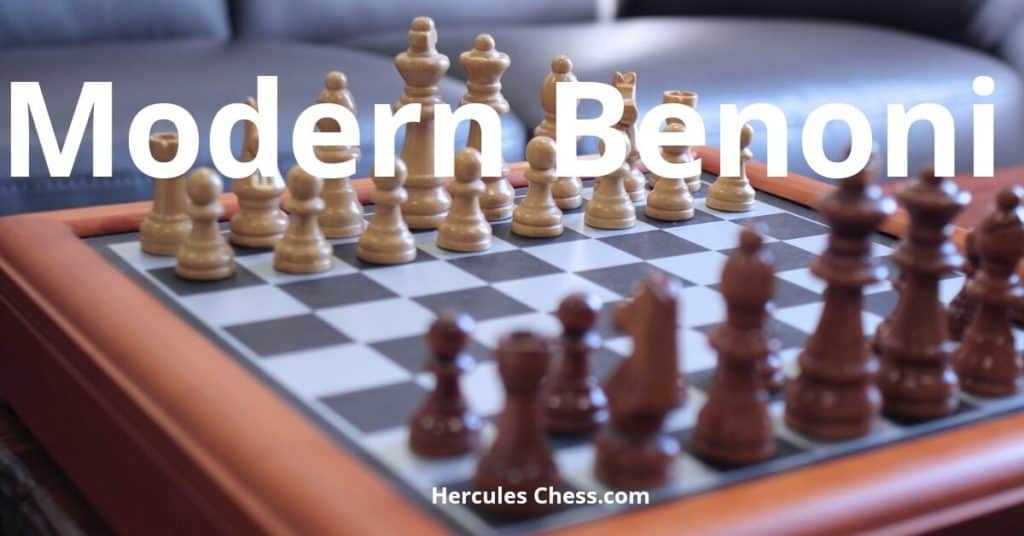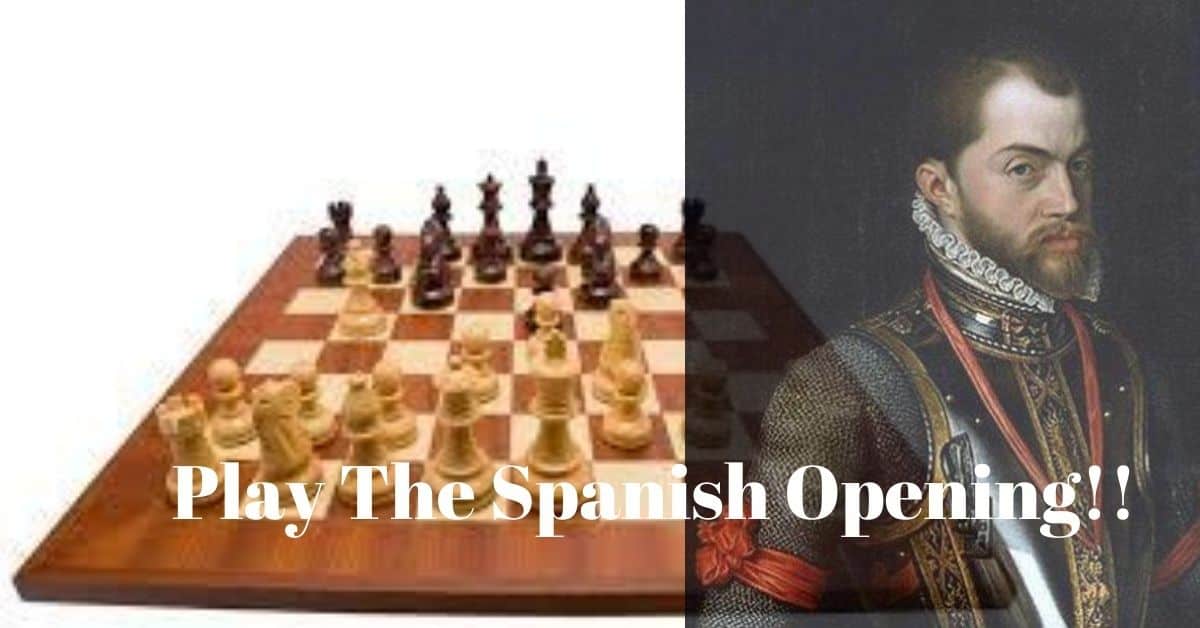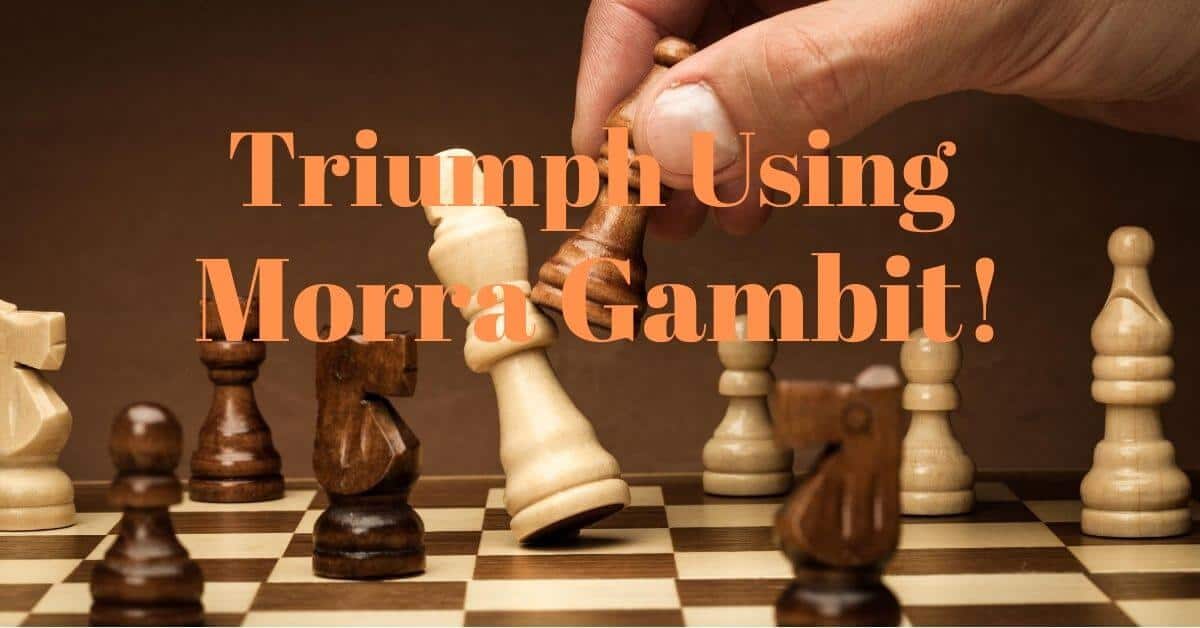The Modern Benoni is also called the son of sorrow. It is an opening that, more than any other, can be attributed to the hypermodern way of playing chess. The starting position after 1.d4 Nf6 2.c4 c5 3.d5 e6 4.Nc3 exd5 5.cxd5 d6 can be dated back to the end of the 19th century. But at that time Black players would develop their king’s bishop to e7, ignoring the potential for counterplay that developing the bishop to g7 would give.
Starting position of the Modern Benoni

Recommended course: The ABC of the Modern Benoni by IM Andrew Martin
It was only after the Second World War that this dynamic way of playing the position became popular. Our modern databases are not always an accurate witness to history, but they can still be used as a source of partial information.
The first game in my database where Black continued with …g7-g6 and …Bf8-g7 (instead of the stale …Bf8-e7) was a game by Nezhmetdinov played in 1950. From that day onwards the Modern Benoni grew in popularity especially because Mikhail Tal employed it in his ascendance to his World Championship match against Botvinnik.
The following famous game shows what the Modern Benoni was able to offer Tal, that made him use it again and again throughout his career.
Famous Modern Benoni Defense Game
{NB: to view the game from a mobile, click the bottom right icon}
Tal is not the only World Champion to have used the Modern Benoni successfully in important games. Fischer used it in his World Championship match against Spassky, and Kasparov has played it several times too, such as a crucial game against Korchnoi at the Lucerne Olympiad 1982, where he daringly sacrificed a piece and won.
Among modern players the Modern Benoni has less support than previously. Chess is like all other aspects in human life: fashions are very important. In the 1950’s Tal’s sharp, tactical chess replaced, for a short while, the long strategic games of Botvinnik and Smyslov. Then came Petrosian with his very prophylactic style, though the 1960’s were dominated just as much by the more modern dynamic play of Spassky, Larsen, Korchnoi and Tal.
Mikhail Tal (First World Champion to use the Modern Benoni Opening)

Fischer and Karpov both had a very strong emphasis on technique and the 1970’s saw many short draws. In the 1980’s Kasparov changed the understanding of chess with his dynamic play, while in the late 1990’s Kramnik and the computer programs changed chess again, and a more defensive style has once again become predominant, even in the games of such wonderful attacking players as Kasparov and Judit Polgar. The latter recently said in an interview in New in Chess that she had changed her style as it gave more points to counter-attack.
As can be seen, it is merely fashion that makes Topalov the only top player in the third millennium to employ the Modern Benoni regularly. Other sharp openings, such as the King’s Indian and Benko Gambit, have also lost popularity lately and find fewer and fewer followers. This does not mean that they are bad systems, however. Nimzowitsch declared the Scandinavian Defense (1.e4 d5) as losing in My System in the 1920’s, but it still gave Anand a reasonable position in his 1995 World Championship match against Kasparov. Fashions change and many follow them, while some do not.
The Modern Benoni is a difficult opening to master. It offers Black a lot of piece activity in return for a rather fragile pawn structure in the centre. But as the game played by Tal above illustrates, it also offers good winning chances! In his old book on the Modern Benoni, Nunn wrote that God playing White would probably beat God playing Black in this opening. But between humans there is no reason why this opening should not offer you great results. It is a difficult opening to master for both colors and should therefore be treated with respect.
What Is The Modern Benoni
The Benoni structure is known from many openings. The basic structure comprises black pawns on c5 and d6 vs. a white pawn on d5 but there are numerous different variations on this.
Basic Benoni Pawn Structure

One is the Schmid Benoni which often arises after 1.d4 c5 2.d5 d6 3.e4 Nf6 4.Nc3, where White refrains from playing c2-c4 in order to use the c4- square for his knight (Nf3-d2-c4); another is the Czech Benoni, arising after 1.d4 Nf6 2.c4 c5 3.d5 e5. These systems are rather passive compared with the Modern Benoni, which most commonly arises after 1.d4 Nf6 2.c4 c5 3.d5 e6 4.Nc3 exd5 5 .cxd5 d6 6.e4 g6. However, fear of the variation 7.f4 Bg7 8.Bb5+ has encouraged Black to look for different ways of transposing to the Modern Benoni, the chief characteristic of which is the exchange …e6xd5 with White replying c4xd5, producing the following pawn structure:
Modern Benoni Structure

Besides the main line, there are many ways to get into the Modern Benoni. I will present some of them here.
1.d4 Nf6 2.c4 e6 3.Nf3 c5 4.d5 exd5 5.cxd5 d6. This move order is especially designed to avoid the variation with f2-f4 and Bb5+ mentioned above. Here White has already developed his knight to f3 and therefore is less flexible in his set-up. To my knowledge there is no drawback to this move order, besides White having 3 Nc3, which can also be met with 3…c5 with likely transposition to the main line. This has no visible drawbacks for Black either, except that White can now play the f2-f4 lines if desired.
Transpositions into the Modern Benoni
An important move order is via the King’s Indian, which can occur in many ways. Here are some of them, all starting 1.d4 Nf6 2.c4 g6 3.Nc3 Bg7 4.e4 d6 and then:
- 5.Nf3 0-0 6.Be2 c5 7.d5 (7.0-0 would aim for different structures) 7…e6 and Black is ready for …e6xd5. This can often be delayed a little; a move like …Rfe8 first could prove
- 5.f4 0-0 6.Nf3 c5 7.d5 e6 8.Be2 exd5 9.cxd5 which is actually the main line of the Four Pawns Attack versus the King’s Indian; 9.exd5 is not considered very sexy by modern theory. However, when you come to the Modern Benoni from a different move order e4xd5 must often be taken into account, so please note that the structures with e4xd5 are not considered in this
- 5.f3 0-0 6.Be3 c5 7.d5 e6 8.Qd2 exd5 9.cxd5. In this line 7.dxc5 or 7.Nge2 are more common; the latter may also become a true Benoni after 7…Nc6 8.d5 Ne5 9.Ng3 e6 and then 10.Be2 exd5 11.cxd5, but still it is onlybordering on the sacred. Another related line is 6.Bg5 c5 7.d5 e6 8.Qd2 exd5 9.cxd5
- 5.Nf3 0-0 6.h3 c5 7.d5 e6 8.Bd3 exd5 9.cxd5 (9.exd5 is another main line here) and we have a main line in the Modern Benoni once again.
There is yet another way to go for the Modern Benoni structure. After 1.d4 Nf6 2.c4 c5 3.d5, Black can simply develop first with 3…g6 4 e4 d6 and only after …Bg7 and …0-0 start to think about …e7-e6 and …exd5. Again the main problem seems to be that White can maintain a slight space advantage with e4xd5 at any given moment. Only the quick …e6 and …exd5 prevents this rather boring idea.
However, we should not forget that the Modern Benoni is not heavenly bliss for Black, but just another dynamic opening among equals, so there is not necessarily any reason for White to avoid it!
An Overview of Strategic Ideas in the Modern Benoni
The Modern Benoni is one of those openings that leaves Black with a suspect pawn structure, but in return gives him free piece play. The struggle in the Modern Benoni is often between White trying to open the centre and get the passed pawn the structure seems to promise him, and Black trying for counterplay either on the queenside or in the centre, mainly through active piece play, but also with possible pawn breaks from the side (…b7-b5 or …f7-f5).
White, of course, hopes to restrict the black counterplay and win by opening the position to his advantage. His slight space advantage and freer movement gives him the chance to foresee Black’s ideas and try to prevent them. This is one important aspect of the strategic battle in the Modern Benoni, which is going on all the time, and will be an underlining factor in all of the strategic examples below. In fact it is so common that to treat it separately makes little sense.
Some club players tend to make decisions based on abstract observations, in no way related to the actual position in front of them. The following examples should not be read as such. They are typical situations in the Modern Benoni, but just knowing about them will not tell you whether they are good or bad. However, not knowing about these ideas would be a serious limitation for you when you play the opening (with either colour). I decided to include some basic strategic situations in this introduction. They are split into first White’s plans and then Black’s plans.
White might seem to have fewer options compared to Black, but in return he has more space and often a slight lead in development. So holding on to his advantage by preventing the black ideas is actually at the top of the list of White’s priorities, even if it is not highlighted with its own separate heading below.
Strategic Ideas for White
1. ) The advance e4-e5
The most important strategic idea for White in the Modern Benoni is the pawn push e4-e5. This advance will most often eliminate the d6-pawn, and thereby give White a passed d-pawn, just as it is likely to irritate the black pieces. There are many situations and circumstances where e4-e5 can be played.
2.) The Advance e4-e5 Supported by the f-pawn
It can often be a good idea for White to strengthen the e4-e5 break by supporting it with the f-pawn.
3.) The Advance e4-e5 Played as a Pawn Sacrifice
Sometimes White plays e4-e5 even though he has no control over e5 and cannot win it with tactics. But there can be other reasons for playing the pawn break, one of which is undermining the c5-pawn.
4.) Looking for the Best Square for the f3-knight
A standard manoeuvre in the Modern Benoni is Nf3-d2-c4, which is most often the best square for the white knight in this type of structure. We will see this again and again, so there is no real reason to single it out here for special treatment.
However, there is an extension of this manoeuvre, which requires special attention. After Black has advanced his b-pawn, White often has the additional possibility of invading the black position with the knight via a5 and c6.
5.) The Advance a4-a5 as Prophylaxis
One of the most common moves in the Modern Benoni is White playing a2-a4 in response to …a7-a6, in order to prevent …b 7-b5 and active Black counterplay on the queenside. This is more or less an automatic move, which always makes it interesting when White refrains from it for some reason or other.
6.) Playing on the ‘Wrong’ Flank: the Advance b2-b4
Usually in the Modern Benoni White is focused on advancing e4-e5, but at times it makes sense for him to play b2-b4 in order to open files on the queenside. Or simply to slow down the opponent’s counterplay.
Illustrative Game
Strategic Ideas for Black
After having gone quickly through the basic ideas for White in the Modern Benoni, it is now time to look at the possibilities for Black. It will be clear that Black has many more possibilities than White. This is not always an advantage.
If White has only a few and strong options to choose from, while Black has a lot but of variable value, it is clearly easier to play White. However, the Modern Benoni is such a complicated opening, that to understand it and to calculate well are more important than this kind of pocket-philosophical discussion
1.) Black Plays …c5-c4 to Activate the Knight via c5
The second most important advance for Black in the Modern Benoni is …c5-c4 in order to make room for the knight. Actually …c5-c4 can be played to make room for the queen as well.
2.) Black Plays …f7-f5 to Open Lines on the Kingside
Instead of playing on the queenside exclusively, …f7-f5 is another way to play the Modern Benoni. When it is possible this advance is often good for Black, but the main problem is that White is usually on his way to playing e4-e5
Illustrative Game
Black had good counterplay in this very unclear game, though it eventu- ally was White who gained full satisfaction after some mistakes from Black.
This is the standard way to play for the …b7-b5 advance these days. Sometimes it is possible first to transfer the knight to c7 in order to gain extra support for the advance. However, this seriously weakens Black’s control of the e5-square, and therefore also eases White’s play in the cen- tre a great deal. In the following rapid game between two of South East Asia’s strongest players, White gains a large advantage from the opening, as Black senselessly follows this rather slow and inappropriate plan.
Note: The highest priority for Black in the Modern Benoni is active piece play. The structure is probably slightly better for White, as the central thrust e4-e5 seems more serious than…b7-b5. But Black is compensated by having greater mobility and more active possibilities. Objectively White should probably be able to maintain the tiny edge which comes with being White, but nothing more.
Fianchetto System
1.d4 Nf6 2.c4 c5 3.d5 e6 4.Nc3 exd5 5.cxd5 d6 6.Nf3 g6 7.g3 Bg7 8.Bg2 0-0 9.0-0

The Fianchetto system is often favoured by positional players, who believe they can outplay the opponent strategically. These include such players as Korchnoi and Nikolic, who play the system from time to time with great passion. However, White’s quiet beginning gives Black time to develop, while the move g2-g3 does not really support the advance e4-e5, which is Black’s main concern in the Modern Benoni. Black has more than one way to gain satisfactory play.
Theoretical?
It truly depends on how you want to play the system. If you want to fol- low in the footsteps of Timman and Kasparov (see the game Korchnoi- Kasparov below) then you will have to be well prepared. If you want to play as Velimirovic and De Firmian then all you need is a few good ideas. This is one reason why I like this system so much.
Statistics
After 9…Nbd7 Black has a good score of 53% in 292 games, so this can be seen as pretty stable. All in all this appears to be a less than harmless opening for White. Furthermore, after 10.Nd2 Nh5!? Black’s score goes up to 65%! His average rating is 60 points higher than White’s, but the result is still encouraging. After 10.h3!, however, White is back with a score of 59% in 29 games, which is more of a standard result, though with so few games it is only one negative result separating it from the normal 55%.
Post you may like: Top 10 Best chess openings for Black






